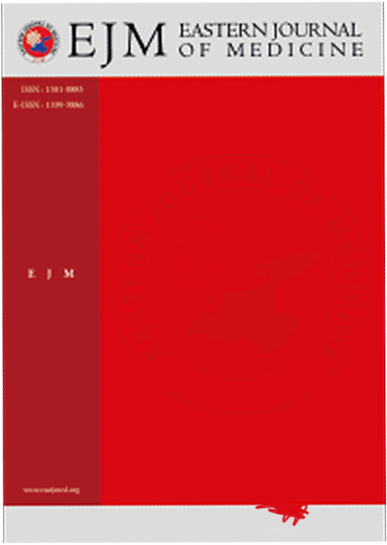The effect of empagliflozin on cardiac systolic and diastolic functions in patients with type 2 diabetes mellitus and hypertension
Ahmet Karaduman1, Cemalettin Yilmaz2, İsmail Balaban1, MUSTAFA FERHAT KETEN1, Semih Kalkan3, Hande Özportakal4, Zübeyde Bayram1, Cem Doğan1, Ali Karagoz1, Cihangir Kaymaz1, Nihal Özdemir11Department of Cardiology, University of Health Sciences, Hamidiye School of Medicine, Kosuyolu Heart, Education and Research Institute, Istanbul, Turkey2Department of Cardiology, Mus State Hospital, Saltukgazi Neighborhood, Hospital Street, 49400 Malazgirt, Mus, Turkey
3Multimodality Cardiac Imaging Section, IRCCS Policlinico San Donato, San Donato Milanese, Italy
4Department of Internal Medicine, University of Health Sciences, Hamidiye School of Medicine, Kosuyolu Heart, Education and Research Institute, Istanbul, Turkey
INTRODUCTION: Empagliflozin may positively affect subclinical left ventricle(LV) dysfunction. We aimed to investigate the effect of empagliflozin on cardiac systolic and diastolic functions in patients with Type 2 diabetes mellitus(DM) and hypertension.
METHODS: Sixty-three patients who underwent transthoracic echocardiography between October-2019 and June-2020, receiving at least one antihypertensive pill, and started empagliflozin treatment due to Type-2 DM were included in the study. Echocardiographic parameters like global longitudinal strain(GLS), left atrial volume index(Lavı), before and 6 months after empagliflozin treatment were compared. Patient's blood pressure(BP),waist circumference, body mass index(BMI), NT-proBNP and other blood parameters were examined.
RESULTS: Of the 63 patients who participated in the study, 30(47.6%) were male. There was an improvement in subclinical cardiac dysfunctions with the use of empagliflozin for 6 months. There was statistically significant difference in GLS (15±2.42 to 16.3±2.3,p<0.001), E/e (10[8.5-11],10.5[9-12],p: 0.01), Lavı (29.6±10.5to 27.3±9.8,p<0.001) and NT-proBNP (75,65.7,p<0.001). Significant improvement in GLS was associated with baseline BMI and NT-proBNP elevation. Also, the decrease in Lavı was found to be related to the initial NT-proBNP elevation. In addition, there were significant changes in patients BP(135±7.9,128±6.9,p-<0.001), diastolic BP (80.2±7.2,78.6±6.6,p-value 0.012), waist circumference (107±8.9,104±9.1,p<0.001) and BMI (33.5±5.6;30.2±4.3;p<0.001).
DISCUSSION AND CONCLUSION: Empagliflozin treatment improved subclinical LV systolic and diastolic dysfunctions in patients with Type 2 DM and hypertension. The benefit of Empagliflozin may be associated with weight loss and decrease of NT-pro BNP as this improvement was more prominent in patients with high baseline BMI and NT-proBNP
Manuscript Language: English














